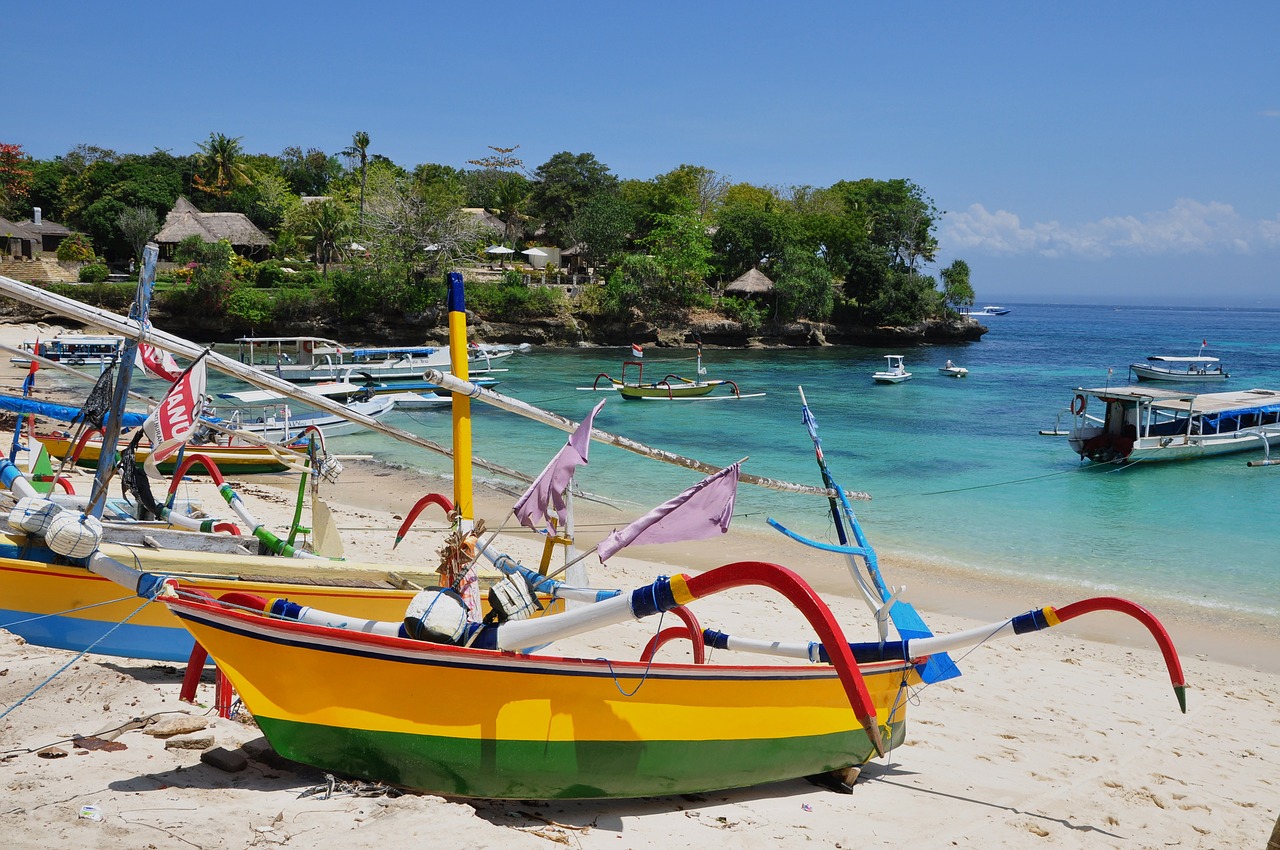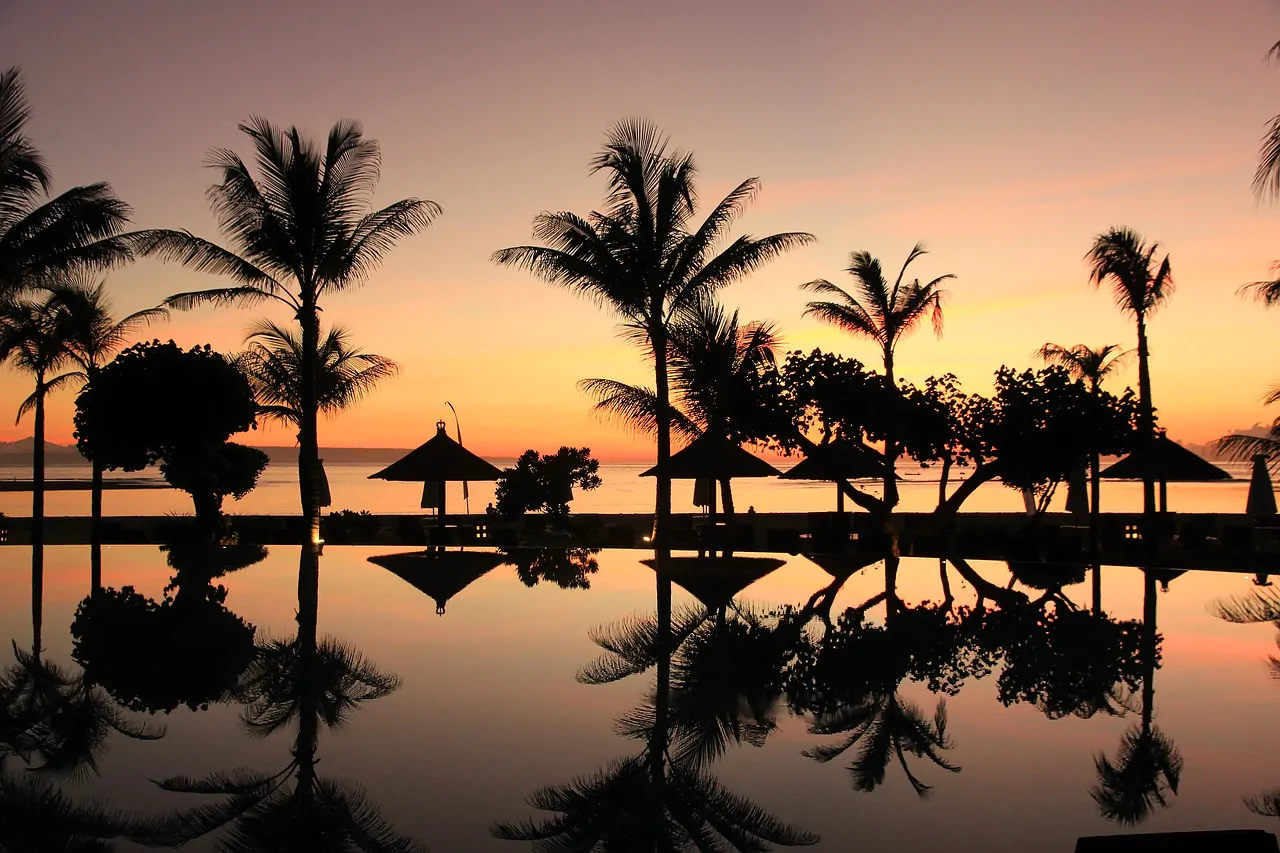So you’re thinking of visiting Bali for your next holiday, but are not quite sure what to expect? Below I’ve put together a quick guide that will hopefully answer any questions you may have about visiting this tropical paradise.
When to go?
Bali has two distinct seasons, rainy and dry. The rainy season runs from November to March and the dry from April to September. The temperature varies very little throughout the year, usually hovering around a balmy 28℃.
Both seasons have their pros and cons, but the extra moisture in the air during the rainy season can make it unpleasantly humid at times.
Before you go
Make sure that you have changed a bit of money, that your passport has at least six months left on it and that your travel vaccinations are up to date (remember you may need to do this several weeks before you travel in order to take a full course).
Typhoid and tetanus as well as hepatitis A and B are all strongly recommended for Bali and there are one or two others you may like to get as well. Malaria medication is not generally needed in Bali as the risk of infection is very low.
Also don’t forget to take out travel insurance.

What to pack?
As stated above, Bali is hot all year round, so packing lots of clothing with natural fibres to keep you nice and cool is a good idea.
Make sure to bring your swimmers and beach gear so you can make the most of Bali’s beautiful beaches. The shops in most parts of the island are pretty well provisioned but it won’t hurt to bring sun cream and bug spray.
Be aware, it can get chilly if you go up into the mountains, so throw in a light jacket and, if you plan to go trekking, bring good shoes.
A sarong is a necessity in Bali (including for the men) as it is compulsory to wear one whilst visiting a temple. If you can’t bring one from home, then you can buy one as a colourful souvenir from a beach stall or, if desperate, most temples provide a few for hire (for a small fee) .
My personal top tip, is to always carry hand sanitiser and a bit of toilet paper, as the public toilets here are not always to the standard one would hope (especially outside the main tourist areas!).

Getting there
Most visitors to Bali arrive at Ngurah Rai International Airport in Kuta. I you are lucky, you will get through the airport quickly, however, for many travellers this is their first introduction to Bali’s ‘organised’ chaos – hope for the best, but be prepared for a long queue to get through immigration (and be grateful that you are in the new airport and not the old one that had no AC!).
Visa rules have changed in the last couple of years. Visitors from many countries (including Australia, UK and USA) no longer have to purchase a visa on arrival, provided they do not plan on staying longer than 30 days. A visa for up to 60 days can be purchased on arrival for 65 USD per person. If you overstay your visa, you will be fined 300,000 Rp per day.
At the airport, look out for porters trying to help you with your baggage, they can provide a helpful service if you having trouble managing on your own, but be aware they will expect a tip – somewhere around 10,000 Rp.
Once you get outside the airport, the first thing you will notice is the heat and the second will be the cry of ‘transport’ from one of a plethora of drivers all vying for your business. If you don’t have a pick up already arranged with your hotel then you can negotiate a price with one of local drivers (make sure you do this before you get in their car), but you should also know that the airport has its own taxi office that will provide transport for a fixed price to many parts of the island.

Where to stay?
In terms of accommodation, Bali has something to offer from everyone, no matter their budget, from cheap backpacker hostels to some of the most incredible private villas and 5* resorts that you will find anywhere in the world.
The type of holiday you want to have will determine which part of Bali is best for you as each area has its own distinct atmosphere. Most of the tourism tends to be focused in the south, with Nusa Dua, Jimbaran, Sanur, Kuta and Seminyak being amongst the most popular places. The former of these are all good places to take a family, you will find plenty of good resorts, a few nice shops and restaurants and some beautiful white sand beaches. Seminyak is the place for all young fashionistas and has become famous for its trendy boutiques and great food scene. And then there is Kuta, always busy and hectic, this has gained a reputation as Bali’s undisputed party zone and is primarily the domain of young Aussie surfers.
Bali’s interior is mountainous and full of activities for those with an adventurous spirit, including mountain climbing, biking, trekking, whitewater rafting and elephant safaris. Ubud is the most famous town in the central highlands and is often considered to be the spiritual heart of the island. Nowadays, it is the place to go for those looking to ‘find’ themselves and is full of health cafes, spas and yoga retreats. You will also find plenty of art galleries and local crafts, a beautiful royal palace and multiple temples. The accommodation here ranges from camping to 5*.
The north coast has a couple of resort areas, most famously Lovina, and a much quieter pace of life than you will find down south. There are some great areas around here for diving, snorkelling and dolphin spotting as well as easy access to Bali’s only national park. If you are ,expecting white sand though, you will be disappointed as the beaches are all made up of black volcanic sand
Along the east coast are couple of other destinations, most notably Candidasa and Amed, which have both managed to maintain something of a a sleepy fishing village kind of vibe and the latter of which is famous for its amazing diving.

Getting around
Whatever you may have heard about the craziness of Bali’s traffic, times it by ten (at least)! If you are brave, there are plenty of cheap bike and car rentals available. Just make sure to check the insurance of any vehicle before you hire it and make sure it is good condition. If you are going into the mountains, you will need a 4X4.
Often, a much more relaxing option is to hire a driver for any day trips you wish to take. They may be able to fill you in on a bit of local culture and will often know the best places to go. Plus you have the added benefit of being able to sit back and watch the beautiful forests and rice terraces go rolling by.
For short journeys taxis are a great and affordable option. Try to stick to Bluebird Taxis if possible; this is the most reputable taxi firm in Bali and they always use a metre. Bluebird cars are a light blue with a distinctive bird logo – look out for imitators though!
Buses and bemos run along all the major routes on the island but their depos are often in out of the way places and any fixed schedules will obviously influence your flexibility. If you get a bemo expect to pay a ‘foreigner’ price that will a little more than what the locals are paying.
What to eat
Whatever concerns you may have about food in Bali, forget them, there are some amazing restaurants here that cover all budgets and tastes. International food is available in most places, with Australian, Italian, Greek and Indian cuisines all well represented. Do take the time to try a few local dishes though as most of it is delicious. Bali is famous for its babi guling (roast pork) and nasi goreng (fried rice with some combination of veggies, chicken and / or seafood – if you prefer noodles, ask for the mie goreng instead), is great introduction to Indonesian food. Just look out, the Balinese love their chilis (most places will adjust the spices if you ask them to) and if you are worried about ‘Bali belly’ it may be a good idea to avoid food from the local street vendors.

Places to go, things to do
Whilst there are plenty of things to see and do all over the island, there are a few things that everyone who has spent any time here has ticked off their list.
Visit a temple – wherever you are staying, you will not find it hard to find one. If you are in the south, Tanah Lot and Uluwatu are two of the most famous and easiest to get to and they are also very picturesque (especially at sunset).
Watersports – you will find plenty of opportunities for action in the water, from whitewater rafting in the mountains to to one of Bali’s world famous surf breaks. There are a few excellent places for snorkelling and diving along the east and north coasts of the island.
Waterbom – always a popular choice with both kids and adults. Kuta’s most well known waterpark has enough slides to keep even the most hardened adrenaline junky happy.
Buy some local art – virtually every Balinese person seems to have some kind of artistic gift, whether it be as a musician, a painter or a wood carver. You will find plenty of vendors selling their wares in stalls all over the island. What better way to help out the community than buying a beautiful piece of artwork, which will also serve as a perfect reminder of your time in Bali?
People and culture
Bali has a rich and complex culture, largely focused around the ancient form of Hinduism that is practiced on the island. Everywhere you go, you will see colourful offerings left out for the gods and the nickname ‘ the island of a thousand temples’ is certainly a vast understatement.
The Balinese have a reputation for being friendly and hospitable. Smiling is important, being seen as sombong (arrogant and unfriendly) is considered very rude. If you have any kids, you will find them very welcome here as children are somewhat revered in Balinese culture.
The local people are generally very understanding of foreigners who don’t quite understand their way ways and customs, but, to help you out a bit, here are a few ‘dos and don’ts’ (including a few safety tips).
Don’t touch people’s heads, even children. The Balinese consider the head to be the most spiritual part of the body.
Don’t point with your feet. These are considered to be the most spiritually unclean part of the body.
Don’t pass or point at anything with your left hand (in fact, don’t point at all if you can avoid it) as this is also believed to be spiritually unclean.
Don’t use the tap water, even for teeth cleaning.
Don’t have ice in your drinks outside reputable places.
Do learn a bit of the language – even a simple terima kasih (thank you) will go a long way.
Do haggle in the markets – this is expected and can be a fun experience. Don’t get ripped off, but try to be fair, and remember that the 5,000 Rp you are arguing over means a lot more to the locals than it does to you.
Do pay attention – whilst chaos is part of the charm or Bali, it can result in lacking health and safety measures. Potholes in the road, broken or missing drain covers and guardrails are just some of the potential hazards that could ruin your holiday.
This guest post was contributed by Bali Villas. With extensive experience in servicing Australian clients, Bali Villas know exactly what families are looking for in terms of location, style and pricing. Each of their family friendly villas situated on the beautiful island of Bali have been hand-picked by their ‘family expert’ – someone with children who knows exactly what families are looking for. Contact Bali Villas for a short consultation, and they will be able to find you the perfect villa. Bali Villas aim to take the stress out of planning your holiday, so you can concentrate on creating lasting memories with your family.
Join my email list and get a FREE copy of my TRAVEL PLANNING TEMPLATE
My Travel Planning Template will make your travel planning simple & stress-free!

Bali is a really amazing travel destination. Your travel guide will be really helpful to everyone. Thanks for sharing. The photos are also really beautifull.